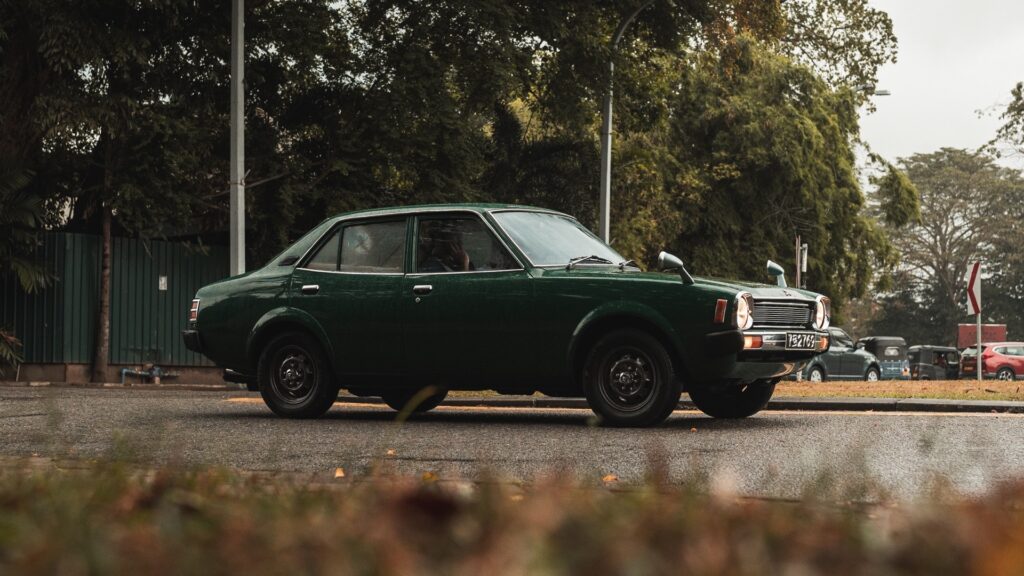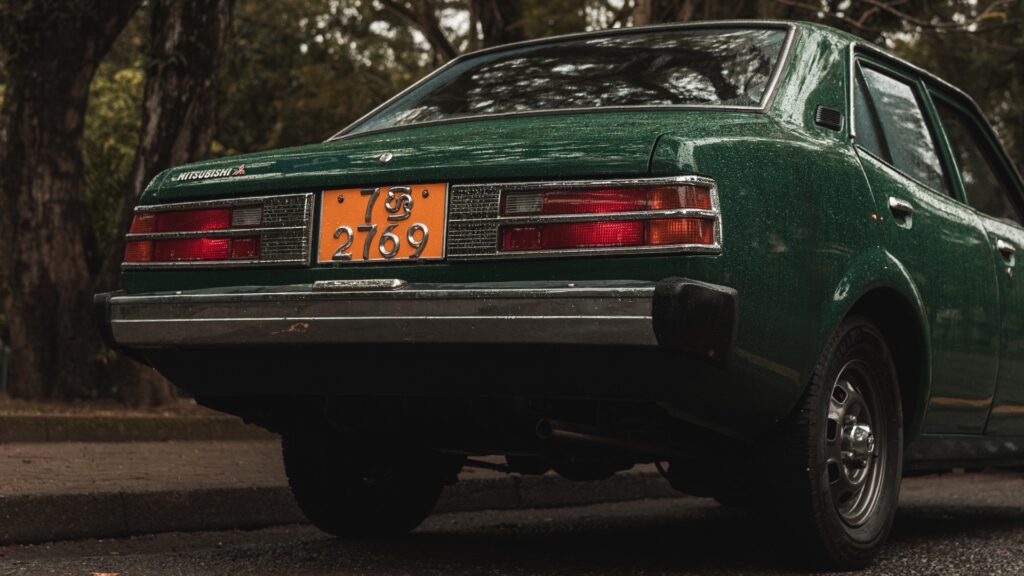Not every car gets to be remembered as being special. To be honest, the way automotive legends are born is a mysterious one. Some super-hyped models manage to live up to their initially enthusiastic reception, while many others simply fade in time. But there’s another category that exists: cars that somehow missed the “legendary” status but are perhaps more thoroughly deserving of it. One of those is the first-generation Mitsubishi Lancer.
JDM Drive: The Honda Accord Euro R Is The Best Sedan You’ve Never Heard Of
Now, depending on where you’re reading this, you might know it by another name—Dodge Colt, Chrysler Colt, or maybe even a Plymouth—but what we’re talking about here is the original article: a Mitsubishi-badged Lancer from back when the Japanese brand was still finding its global footing. And despite its unassuming spec sheet and sleeper looks, the first-gen Lancer has more substance than most give it credit for.
QUICK FACTS
Wait, Isn’t That The Totally Dull Dodge Colt?
If you’re reading this in the US, then you’ll likely recognize this as the third-gen Dodge Colt sedan – a rebadge of the Lancer that was an early fruit of the long collaboration between Chrysler and MMC. And, if you’re old enough to remember the Dodge Colt, we won’t blame you for writing them off as a dull econo-box far removed from the kind of legend-in-the-wings picture I’m trying to paint here.
The thing is, by the time the third-gen Colt was introduced in the US, the Lancer had already been in production for at least five years. As such, it was seen as an old-school solution to a present-day problem.
With the US still reeling from the fuel crisis, many automakers had gotten used to offering small-capacity front-wheel drive cars to consumers keen to eke out the miles. Late to the party, the rear-wheel drive Dodge Colt was marketed as the “Mileage Maker” and was positioned as a bargain-basement solution.
It was confusingly smaller than the Galant-based car it replaced and lacked any frills. The marketing aimed the new Colt squarely as being a better alternative to Toyota and Datsun’s economy offerings – not because it was significantly better, but rather because it had a Dodge badge on the hood.
The Colt, however, was decidedly old-school. Its rear-wheel drive layout was borderline old tech, and a leaf-sprung rear suspension didn’t quite read well on paper. To US consumers, the Lancer-based Colt was the epitome of an econo-box.
Despite all that, reviewers praised its impressive driving dynamics. However, cars like Dodge’s own Omni, which was introduced a year later in 1978, offered a more modern and European-like take on the matter.
But there’s a lot more to the Lancer’s history, and while it may have been considered a penalty-box-on-wheels in the States, the first-gen Lancer was crucial to Mitsubishi’s storied success in rallying.
One Man’s Economy Car Is Another’s Rally Star

In Japan, the A70-generation Mitsubishi Lancer was significantly more appreciated. It was launched in 1973, half a decade before it was sent to the States as a Dodge, and offered a wide range of four-cylinder engines, ranging from a 1.1-liter for the base model to a race-developed 1.6-liter lump. There was a wide range of body styles too; in addition to the four-door sedan, there was also a two-door coupe and a five-door wagon.
Trim options were decidedly more plush. Our featured car is an SL trim model from 1977, featuring velour seats, chrome trim, an all-synchromesh five-speed gearbox, a deep-dish steering wheel, and a tachometer. But what really marked this generation out was when Mitsubishi decided to take rallying seriously. Decades before “Evolution” became a byword for Japanese WRC supremacy, the company decided to create its own special edition to tackle the infamous Safari Rally.
The Safari Rally held in East Africa was once the ultimate litmus test of a car’s go-anywhere abilities, with competitors subjected to 3,700 miles of some of the most arduous terrain a car would ever encounter. So, when the Lancer 1600 GSR won the event on its first attempt in 1974, not only did it cement Mitsubishi’s first-ever WRC win, it also gave it a formidable reputation within the region.
Behind The Wheel
Our featured car is a low-mileage example that has been lovingly recommissioned into active service by its present owner. It’s not a GSR with that firey 1600 engine but instead features a 1400 cc four-cylinder with 67 hp. A paltry figure now and one easily surpassed by city cars, but enough to get by in its day.
Nestling into the driver’s seat, you expect a reasonably old-school driving experience, hinted at by the thin-rimmed steering wheel and closely positioned pedals. But, for a car without power steering, the Lancer is surprisingly light on its feet, even at slow speeds. The steering, despite exhibiting a minor amount of play that is characteristic of the old-school steering box, is the antithesis of the ones in 99 percent of cars on sale today: it’s communicative, quick to accept input, and easy to gauge the conditions of the road. The gearbox is similarly snicky, with a relatively long throw but a pleasingly positive action that encourages you to swap cogs as much as you can.
In modern traffic, you’re forced to keep rowing through the gears, but once you get up to speed on an open stretch, fifth gear helps keep things quiet. And from an era that was known for buzzy engines, the four-cylinder carb-fed lump manages to keep itself from sounding like an annoyed bee even when pushed. It’s no powerhouse, and the aftermarket addition of A/C doesn’t help either. But when it comes to keeping up with the flow of the road, it’s more than competent without feeling labored.

Perhaps most impressive is the car’s road-holding abilities. On thin 175-crosssection tires, the Lancer is a ball of fun to toss around. But despite its relatively rudimentary leaf-spring rear, it remains planted and, most importantly, predictable in its reactions. Where you’d have to mark the Lancer down would perhaps be ride comfort, with the car getting unsettled over harsher bumps.
However, compared to most contemporary creations, which in its primary markets were still dominated by British-built competition, the Mitsubishi Lancer feels streets ahead in modernity. The build quality, even after five decades (albeit with impressively low miles for a car of this vintage) is nothing short of impressive, too.
So, why don’t we remember the first-generation Lancer with more fondness? While it may not have done so well in the States, the notoriety of successive generations of Lancer, particularly when the Evolution line was introduced, likely has something to do with it.
JDM Review: The 108 HP Toyota Sera Coupe That Influenced McLaren’s F1
Perhaps it’s easy for automotive historians to reference the well-televised and documented exploits of more exciting turbocharged all-wheel drive beasts. Or, perhaps Mitsubishi themselves successfully managed to market their successes exclusively to their more modern incarnations.
Whatever the reason may be, it’s important to remember there are still some attainable and rewarding classics left out there. Cars like the first-gen Mitsubishi Lancer may remain underappreciated for decades to come, but for those few who can cling to this unsung hero, it’s a gem of a usable classic.

